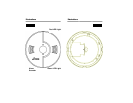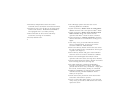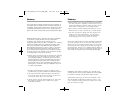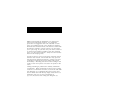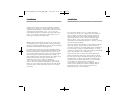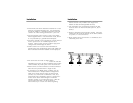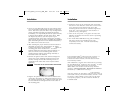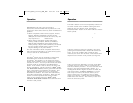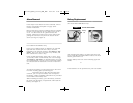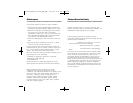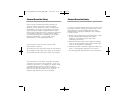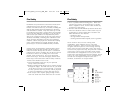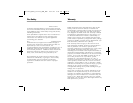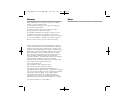
General CO Information
Carbon monoxide (CO) is a colorless, odorless, and
tasteless poison gas that can be fatal when inhaled. CO
inhibits the blood’s capacity to carry oxygen.
Symptoms of CO Poisoning
The following symptoms are related to carbon
monoxide poisoning and should be discussed with ALL
members of the household:
Mild Exposure: Headaches, running nose, sore eyes,
often described as "flu"-like symptoms.
Medium Exposure: Dizziness, drowsiness, vomiting.
Extreme Exposure: Unconsciousness, brain damage,
death.
The above levels of exposure relate to healthy adults.
Levels differ for those at high risk. Exposure to high
levels of carbon monoxide can be fatal or cause
permanent damage and disabilities. Many cases of
reported carbon monoxide poisoning indicate that
while victims are aware they are not well, they become
so disoriented they are unable to save themselves by
either exiting the building, or calling for assistance.
Also, young children and household pets may be the
first affected. Familiarization with the effects of each
level is important.
To keep this Smoke/CO Alarm in peak condition:
• Verify the unit's alarm and LED lights operation by
pushing the Test/Reset/Hush
®
button once a week.
• Remove the unit from mounting plate and vacuum
the alarm cover and vents with a soft brush
attachment at least once a year to remove dust and
dirt. Reinstall immediately after cleaning and then
test using the Test/Reset/Hush
®
button.
• Never use detergents or other solvents to clean the
unit.
• Avoid spraying air fresheners, hair spray, or other
aerosols near the Smoke/CO Alarm.
Do not paint the unit. Paint will seal the vents and
interfere with the sensor’s ability to detect smoke and
CO. Never attempt to disassemble the unit or clean
inside. This action will void your warranty.
Move the Smoke/CO Alarm to another location prior to
performing any of the following:
• Staining or stripping wood floors or furniture
• Painting or wall-papering
• Using adhesives
Storing the unit in a plastic bag during any of the
above projects will protect the sensors from damage.
WARNING: Reinstall the Smoke/CO Alarm as soon as
possible to assure continuous protection.
When household cleaning supplies or similar
contaminants are used, the area must be well
ventilated. The following substances can affect the CO
sensor and may cause false readings and damage to
the sensor: Methane, propane, iso-butane, iso-
propanol, ethyl acetate, hydrogen sulfide, sulfide
dioxides, alcohol based products, paints, thinner,
solvents, adhesives, hair spray, after shave, perfume,
and some cleaning agents.
Carbon Monoxide Safety
22 23
M a i n t e n a n c e
810-1692_RevD_119-133_MAN_ENG 10/7/03 4:41 PM Page 22



